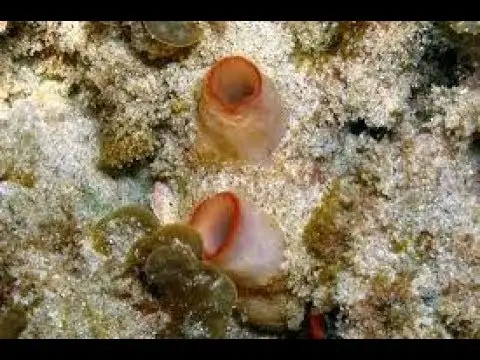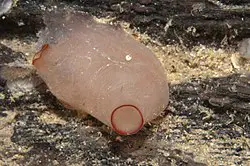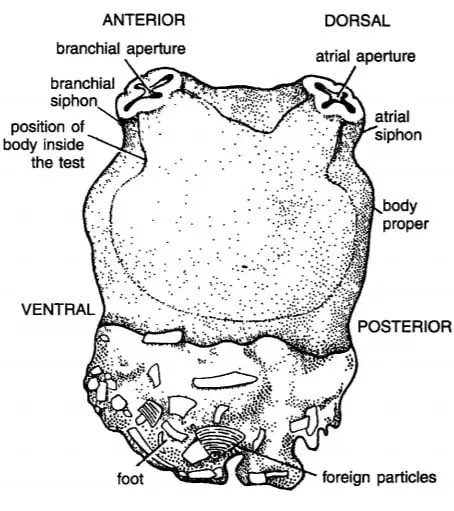Herdmania is a member of the subphylum Urochordata, lives in a marine environment also known as sea squirt or Ascidian. Now we will discuss the body shape of Herdmania, size of Herdmania, the coloration of Herdmania, and external morphology of Herdmania.
Table of Contents
The shape of Herdmania:
Herdmania somewhat looks like a potato or purse bag, on external appearance it has a roughly rectangular shape. The external tunic gives them a rough surface to their body and their body is laterally compressed.

Size of Herdmania:
The size of a Herdmania on average have a length around 9 cm, breadth around 6 cm, 4 cm thick, and have a foot of around 4 cm long. Size is much bigger in older Herdmania, a larger size of 13 cm in length, 8 cm broad, and around 4 cm thick Herdmania also found.
Coloration of Herdmania:
The color of the test in Herdmania is pinkish and has red tints on the surface of their body. The superficial blood capillaries give the test a pinkish appearance and the vascular ampullae give red tints on the pinkish surface.
External Morphology of Herdmania:
The body is covered by a loose leathery test or tunic and the whole body can be divided into two parts, body proper, and foot.
Body Proper:
The upper rough rectangular distal part of the body which is free is known as body proper. As compared to the foot part this part is larger in size and longer in length. At the free end of the body proper two hollow tube-like structures are present which is known as siphon or funnel. Among the two siphons, one is known as a branchial siphon and another one is known as an atrial siphon.
Branchial siphon is smaller than atrial siphon, the direction of the branchial siphon is inward and the pore at its tip is known as branchial aperture or incurred opening. Atrial siphon is larger in length, it is directed towards the outside and it opens outside through an atrial aperture or excurrent opening.

The branchial aperture act like a mouth opening through which water current enters the body and the atrial aperture act as an exit point for the exit of the water current. Both branchial aperture and atrial aperture are protected by a four-lobe-like structure that controls the opening of the atrial aperture and branchial aperture.
The margin of atrial aperture and branchial aperture is lined by red-pigmented tints. Branchial aperture is much wider than atrial aperture, it enables the water current to enter the body at a faster rate for a more efficient supply of oxygen and food.
Foot:
The foot is the proximal body part of Herdmania which is made of tunic or test the foot has several particles like sand, the shell of various animals. The foot part has no regular shape and size, if the Herdmania remains attached with a hard surface then the foot part remains absent and the body proper is concave.
If the substratum is made of sand then the animals are attached to the substratum by slightly narrow foot, the surface of the foot has different shapes according to the shape of the surface. When the animals do not attach to any substratum, the foot part helps Herdmania to maintain body balance.

The irregular shape of Herdmania most of the time makes confusion about their different regions, the body is laterally compressed. The two lateral sides of Herdmania are the right and left sides, branchial aperture represents the anterior portion, atrial aperture represents the dorsal portion, the opposite region of the dorsal region is a ventral region and the opposite region of the anterior region is a posterior region.
During their development, the larva undergoes retrogressive metamorphosis and the change in position of different parts of their body gives them such irregular body orientation.
Reference Habitat and Habits of Herdmania
Detailed Information on
Hi Everyone!!! Welcome to Imaluop. Imaluop always try to learn some new and he want to share to other people. Here we will try to learn various topics on Science, specially on Biological Sciences.